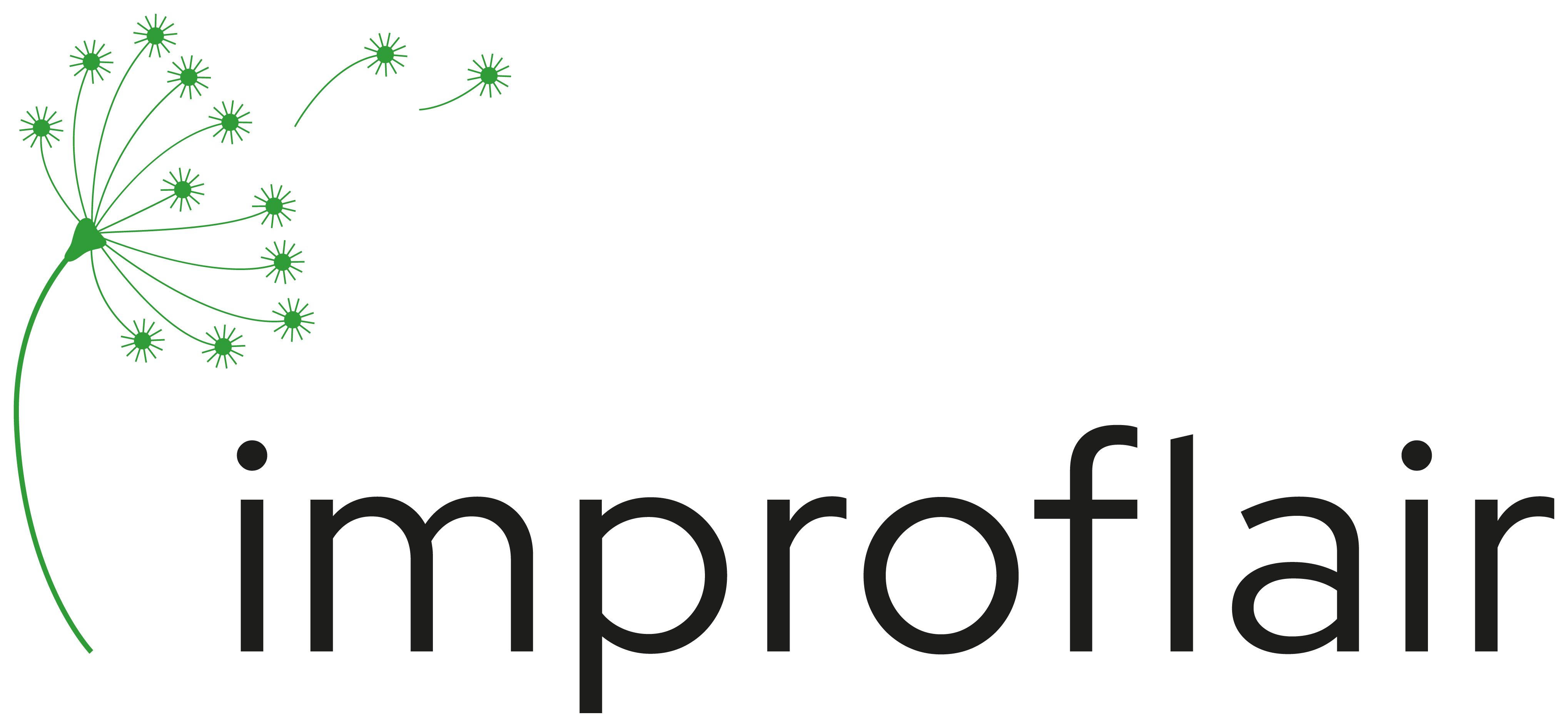A paradigm for any form of improvisation is, to notice what others around you are doing and also to use impulses offered by these people. That sounds quite normal, naturally, self-evident. One point is, that we often forget to do it, another one is that again and again it is important, to practice to do it and how to incorporate, use, evolve, to connect impulses.
I will tell in this blogpost about several approaches to that, I encountered lately.
At the improvisation theater festival moment in Vienna (September 2016) I attended a workshop of Rob Ben Zev: We used various association games, e. g. one similar to a “Yes, and…- game” and also played short scenes. One rule, we used in the whole workshop: Use words, parts of sentences, whole sentences that your partner used before. So if he/she says “Hello, Susan!” you either have to incorporate “Susan” or “Hello” or both in your own sentence. Rob also told us, to hold eye contact during exercises, to make sure, to stay in contact and not to search for inspirations in thin air around us (ceiling, floor, wall, window – just looking away). We used both approaches afterwards in the improvtheater group I am part of, and decided also to use movements of the other person we perceive. You can only use words / movements of others if you are aware, they are here, that they are – to speak with Patricia Madson – presents in the room, you are invited to use.
In this workshop I also got another deep insight in the “Improv rule” of “follow the follower”: I am using mirror games and “copying each other” – games a lot. Rob told us from the beginning of the method we did in pairs, that we should do and react at the same time, that both of us are giving bodily inspirations and copy them at the same time. I lately experienced a method, that could also be seen like an intimate variation of that: Pairs. Both raise their hands as a starting point to the level of the own shoulders, the palms of your hands show to you. The backsides of the hands connect. Both persons start to move their hands in a play of giving and taking impulses of movements at the same time.
Dr. Duncan Marwick is an expert and practitioner on playbacktheater, who facilitated a workshop at the “Impro talks symposium” (Zurich, Oktober, 2016). He referred to the Meisner technique, that for sure is also relevant for any use of methods of Applied Improvisation. I described one method (a ball game) he used here. Another one was this:
A pair, looking at each other closely. One of them is saying something, he or she sees. The very first, obvious thing. It might be a detail on the face or on the clothes. It might be, that the other person Is wearing glasses or a blue shirt. Now look to another spot in the room. Say something different, you remember. After trying this for some time: Choose one observation like “You have brown eyes” and say it, your partner repeats that (or “You have brown eyes” and “I have brown eyes”). Using the same line, this dialogue goes on for about two minutes. Notice small differences in language and if they are used by the partner, like pace, breathing, rhythm…
The observation, choosing one thing to say and repeat is afterwards also used while:
- Sitting back to back
- Sitting back to back, stand up together and sit down together for the next two to three minutes
- Stand side by side, your shoulders and arms touch. While repeating kneel down at the same time and stand up again
- One partner is standing behind the others – he/she is touching the other. While repeating try to be the one, who stands in the front in a playful, tender and at the same time energetic way (you want to be in the front!)
This results in really taking in the other one, start to notice and react on very subtle, “small” variations. A focus is on the relationship and it’s development.
I also attended the workshop “The story is in your partners eyes”, designed and facilitated by Odile Cantero at a improvisation theater festival in Zurich (Oktober 2016). I often use this game she used as a start: Standing in a circle, pointing to another person and saying his or her name (often I use the variation of just saying “You”) and waiting to be acknowledged by a “Yes”. At this instance walking to the place, this person is standing while in the same time, he/she points to someone else, saying the name, waiting for acknowledgment and is starting to go, before the person who pointed to him/her has reached his/her place. The next step is to stop saying the name and just look at the person. And he or she acknowledges with a small nod. Odile then took another step further: Also the small nod isn’t used any longer.
She then did some “eye yoga” with us. The basic structure: Everybody is looking at one person. This person turns his/her head to someone and instantly everybody is looking to him or her.
She afterwards told us, to choose a partner and while a four minutes piece of music playing to look for the whole time in his or her eyes. Very impressive and inspiring!
Afterwards we did small scenes, most of them inspired by a music played at the beginning. One important starting point and constant side coaching was: Look in the eyes at your partner. Not on the floor, not on your hands, not somewhere on the stage. It was astonishing easy to get inspirations and impulses from this constant looking at each other.

